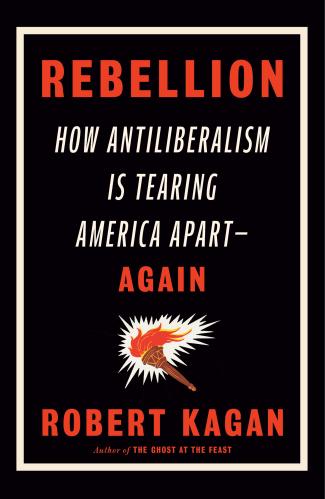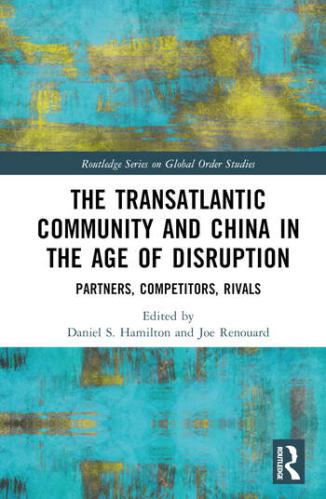This report is part of the Series on Regulatory Process and Perspective and was produced by the Brookings Center on Regulation and Markets.
The Environmental Protection Agency (EPA) recently proposed to stop considering a wide swath of environmental and public health benefits when deciding whether to regulate mercury pollution from power plants. This is an important environmental issue in its own right. It also raises controversial legal and policy questions, including whether the Obama EPA used mercury regulation as a legal shortcut to reduce other forms of power plant pollution. More broadly, the Trump administration’s proposed approach may set a precedent to curtail the regulatory authority of the EPA and other federal agencies, making it another front in the broader battle over the scope and authority of the administrative state.
This piece raises legal and economic concerns with the Trump EPA’s proposed approach, arguing that it rests on questionable premises and it undermines the neutrality of cost-benefit analysis. It also details how the EPA’s approach could affect other regulatory policy areas such as workplace safety. Applied broadly and consistently, it could even undermine support for some elements of the Trump administration’s deregulatory agenda.
The EPA Mercury Rule
Originally adopted during the Obama administration, the EPA mercury rule restricts mercury emissions from coal- and oil-fired power plants. The central issue in the Trump EPA proposal is whether “co-benefits”[1] should count when the EPA decides whether to regulate power plant pollutants like mercury. The Office of Management and Budget has defined a co-benefit as “a favorable impact of [a] rule that is typically unrelated or secondary to the statutory purpose of the rulemaking.” In the environmental context, co-benefits are often pollution reductions that are not required by the rule but happen to arise from compliance with it.
The cost-benefit analysis produced for the mercury rule illustrates why co-benefits can be so important. The rule requires that power plant operators reduce mercury emissions. To do so, the EPA predicts they will adopt new equipment that also reduces pollution known as “fine particulate matter,” an important cause of heart and lung problems. According to EPA estimates provided during both the Obama and Trump years, the direct monetizable benefits from reducing mercury emitted from power plants range from $4 million to $6 million per year (many other health benefits cannot be monetized). The estimated annual co-benefits, largely from reducing particulate matter emissions, are far greater: $36 billion to $89 billion. Costs are estimated to range from $7.4 billion to $9.6 billion per year.
Under the Clean Air Act, the EPA must show that regulating power plant emissions of pollutants like mercury is “appropriate and necessary.” The Supreme Court held in 2015 that this showing required the EPA to consider the costs of regulating but declined to provide additional detail on what was required. In response to the decision, the Obama-era EPA considered both the costs and benefits of the rule, including the large co-benefits noted above. Given the large net benefits of the rule when co-benefits are included, the EPA found that regulating mercury was appropriate and necessary.
The Trump EPA proposes to reverse course on the “appropriate and necessary” finding (although not the mercury rule itself, which was already in place). The EPA (and its allies) argues that co-benefits should not be included to support this required showing because they do not relate to the primary purpose of the Clean Air Act provision under which the mercury rule was issued. If the point of the Clean Air Act provision and the regulation is to reduce mercury, then co-benefits from reducing particulate matter should not count. Including such co-benefits is a way to manipulate the analysis. Supporters of the Obama EPA’s approach generally respond that including co-benefits is allowed by the Clean Air Act and justified by longstanding EPA practice and well-accepted economic principles. This piece now considers three important issues in this debate.
Was the Mercury Rule a Legal Shortcut?
Some critics argue that the mercury rule was not intended to reduce mercury, but was instead a pretext to shut down coal burning power plants as a means to reduce particulate matter and reduce carbon dioxide emissions. The Cato Institute takes this position, arguing that the EPA chose to indirectly reduce particulate matter by regulating mercury because doing so was easier than regulating particulate matter directly (in particular, the mercury regulations require less involvement with state officials). In support of this claim, Cato points to the disparity between the direct benefits of mercury regulation and the co-benefits from reducing particulate matter.
This argument falls short for three reasons. First, it overlooks that the EPA could not quantify (much less monetize) many of the other direct benefits of reducing mercury, such as the impact of mercury on plants and wildlife and negative human health impacts beyond reductions in IQ. While the EPA did not quantify these benefits, they nonetheless could have been important in deciding to regulate mercury. Second, Cato does not point to an alternative means by which EPA could reduce mercury without also reducing particulate matter. The charge of opportunism would be much more convincing were critics able to point to such an alternative. Third, nowhere does Cato (or other critics) cite evidence that EPA sought to use mercury regulation as a pretext to reduce particulate matter. Moreover, this argument is in direct tension with the claim discussed below that the EPA actually double counted the benefits of reducing particulate matter to justify the mercury rule. If particulate matter had already been reduced, why would EPA want to use the mercury rule to achieve the same reduction?
Did EPA Double Count Benefits?
Some critics of the Obama EPA’s mercury rule charge that it “double-counted” co-benefits from reducing particulate matter that had already been claimed in prior rules. If such co-benefits were in fact “double-counted,” then this would be a serious error that overstated the co-benefits. Each time a rule results in reduction of particulate matter, the baseline should be updated and future reductions should be measured against this new baseline. This much should be uncontroversial. The controversy is whether the EPA has actually double counted benefits in practice. Charges that the EPA double counted have not detailed the individual rules in which co-benefits were previously counted. Moreover, the Trump EPA presumably would have had a strong incentive to point out any double counting in its proposal and reduce the co-benefits accordingly. Yet this did not happen. Instead, the EPA cited the Obama-era estimates of co-benefits and argued against including them on legal grounds. All of this suggests that the EPA’s analysis did not in fact double count benefits.
A related criticism is that as a matter of principle, the Obama EPA should not have claimed benefits of reducing particulate matter below what was already required by other EPA rules directed squarely at that pollutant. Under this argument, because the EPA already regulated particulate matter to a manner “requisite to protect the public health,” it could not properly claim benefits from further reductions. Yet the fact that the EPA set particulate matter limits in prior rules does not mean further reductions stemming from the mercury rule categorically cannot have a benefit. An argument to the contrary implicitly assumes that EPA rules have eliminated all public harm from particulate matter pollution.[2] This argument can only be convincingly established with scientific evidence, not the fact that the EPA previously regulated the pollutant.
Inconsistent Treatment of Benefits and Costs
Finally, although the Trump EPA is staunchly against the consideration of co-benefits, it inconsistently proposes to nevertheless consider indirect costs (sometimes termed “co-costs”) in determining whether mercury regulation is “appropriate and necessary.” This asymmetry would create an unjustifiable bias against regulation. A foundational goal of cost-benefit analysis is to analyze which policy choices will produce the greatest net benefits to society. To achieve this goal, agencies must consider both benefits and costs consistently. Unsurprisingly, OMB guidance and EPA practice have long called for agencies to consider both benefits and costs. Considering costs while disregarding corresponding benefits transforms cost-benefit analysis into a tool to oppose regulation.
This inconsistency is also troubling because the distinction between “costs” and “benefits” is itself arbitrary. The terms “benefit” and “cost” are descriptive labels for economic impacts of regulations but they do not merit different analytic treatment. A “cost” can be labeled as a “foregone benefit” and a “benefit” can be labeled an “avoided cost.” Put differently, the labels “cost” and “benefit” are accounting labels to describe positive and negative numbers on one scale. Basing policy decisions on whether an economic impact is termed a “benefit” or an “avoided cost” is an invitation for arbitrariness. Focusing on net benefits, with symmetric treatment for both co-benefits and co-costs, avoids this problem.
Broader Implications of Excluding Co-Benefits
If the EPA’s proposal to exclude co-benefits is finalized, there could be important implications beyond the mercury rule. Co-benefits are important in other areas of environmental regulation and in other policy areas. Co-benefits attract the greatest attention in the environmental context because the dollar values are very high relative to other regulatory areas. This is particularly true with respect to the mercury rule, whose projected co-benefits range up to $89 billion. Even if they have lower benefits, other policy areas are quite important. For instance, the primary purpose of requiring backup cameras on automobiles is preventing backover injuries but an important co-benefit benefit is making parking vehicles easier. To take another example, the primary purpose of FDA food safety handling rules is to increase food safety for consumers but a co-benefit may be improved training and safety for food workers.
The proposed mercury rule may set a precedent to exclude co-benefits in such other policy contexts. It is important to note that the Trump EPA’s proposal attempts to justify itself with reference to particular aspects of the Clean Air Act and court cases stemming from it. However, the proposal’s logic could apply more broadly both to the EPA (in other contexts) and to other agencies (see the appendix below for additional examples). Consider the following:
- Some statutes use the words “necessary” and “appropriate” like the Clean Air Act.
- Other statutes require the agency to consider some variant of whether regulation is “reasonably necessary” to achieve a specified policy goal.
- Some statutes go further, requiring that agencies determine that the benefits expected from the rule bear a reasonable relationship to the costs.
If applied more broadly, the mercury rule’s logic suggests that any of these findings could not be justified with co-benefits. Instead, the rule would have to rest on benefits related to the purpose of the statutory provision justifying the rule.
Excluding co-benefits for the sorts of regulations listed above would make them more difficult to justify. This is likely to be particularly true for rules where the direct benefits are low but the co-benefits are greater. This dynamic may arise more frequently when agencies use broad, older statutes to address new and evolving problems (the debate over the merits of such dynamic agency interpretation is beyond the scope of this piece). In such a case, the direct benefits of the rule are arguably lower because Congress did not contemplate the policy problem addressed by the rule when it enacted the statute but the co-benefits could be much greater. The net result may be to reduce agency regulatory authority.
This dynamic could also hinder deregulatory rules with significant co-benefits. For instance, the Trump administration has proposed to freeze automobile fuel economy standards at 2020 levels rather than implement increases adopted under the Obama administration. The Trump proposed rule is largely justified by projections that reducing auto fuel economy standards will lower the cost of new cars, thereby encouraging more drivers to replace less safe older vehicles and improving safety. Yet Congress did not include safety in the statute authorizing the fuel economy standards. Instead, regulators are directed to consider only technological feasibility, economic practicality, the effect of other standards on fuel economy, and the need to conserve energy. Auto safety is therefore a co-benefit. If it were excluded, then the proposal would have far lower overall benefits and would be even harder to justify.
If the Trump EPA proposal is adopted and withstands legal challenge, a future administration could go through the laborious process of rescinding it. This effort would require a future EPA to describe the flaws in the Trump proposal, leading the agency to criticize its prior approach to cost-benefit analysis yet again. While the inconsistencies created by the Trump proposal noted above would be resolved, cost-benefit analysis would still be undermined. Each change between administrations makes cost-benefit analysis look less like a neutral tool for policy analysis and more like a results-oriented weapon in the combat over the size and scope of the administrative state.
Conclusions
Stepping back, it bears repeating that on aggregate, most benefits of regulation come from co-benefits related to EPA clean air rules. The debate over whether co-benefits should be included in the mercury rule is thus very important in its own right to public health and the economy. The co-benefits debate also raises broader legal and economic concerns. Most importantly, the proposal would treat benefits and costs differently, upending a core tenet of cost-benefit analysis. The proposal may also create a precedent used to exclude co-benefits when justifying other regulations. Yet even strong proponents of the Trump EPA’s proposal may choose not to press the example too far. Co-benefits can be used to justify deregulation as well as regulation. The temptation may therefore be to claim or exclude co-benefits opportunistically. To do so would further undermine the neutrality of cost-benefit analysis as an analytic tool.
The SEC disclaims responsibility for any private publication or statement of any SEC employee or Commissioner. The Article expresses the author’s views and does not necessarily reflect those of the Commission or other members of the staff.
The author did not receive any financial support from any firm or person for this article or from any firm or person with a financial or political interest in this article. He is currently not an officer, director, or board member of any organization with an interest in this article.
Appendix: Examples of Conceptually Similar Statutory Requirements
| Agency | Statute | Requirement |
| Agriculture | Agricultural Marketing Act |
The Secretary of Agriculture shall “promulgate such orders, rules, and regulations as he deems necessary” 7 U.S.C. § 1624(b) |
| Agriculture | Healthy, Hunger-Free Kids Act |
The Secretary “shall prescribe such regulations as the Secretary may deem necessary” 42 U.S.C. § 1779(a) |
| Banking Agencies |
International Lending Supervision Act |
Federal banking agencies have authority to establish minimum capital levels deemed to be “necessary or appropriate in light of the particular circumstances of the banking institution.” U.S.C. § 3907(a)(2) |
| CPSC | Consumer Product Safety Act |
Commission required to find that rules are “reasonably necessary to eliminate or reduce an unreasonable risk of injury.” 15 U.S.C. § 2058(f)(3)(A) |
| CPSC | Consumer Product Safety Act |
Commission required to find that “the benefits expected from the rule bear a reasonable relationship to its costs.” 15 U.S.C. § 2058(f)(3)(E). |
| EPA | Toxic Substances Control Act |
Authorizes the EPA to regulate toxic chemicals that “present an unreasonable risk of injury to health or the environment” 15 U.S.C. § 2605(a). |
| EPA | Federal Insecticide, Fungicide, and Rodenticide Act |
Directs the EPA to deny registration to any pesticide that poses an “unreasonable risk to man or the environment” 7 U.S.C. § 136(bb). |
| EPA | Clean Water Act |
Requires EPA to consider “the reasonableness of the relationship between the costs of attaining a reduction in effluents and the effluent reduction benefits derived” 33 U.S.C. § 1314(b) |
| EPA/NHTSA | Energy Policy and Conservation Act |
In setting automobile fuel economy standards, agencies must consider “economic practicability” 49 U.S.C. § 32902(f). |
| FAA |
FAA Extension, Safety, and Security Act |
The FAA Administrator is “authorized to issue, rescind, and revise such regulations as are necessary” 49 U.S.C. § 106(f)(3)(A). |
| HUD | Housing and Community Development Act |
The HUD Secretary is required to establish standards for manufactured housing that are “reasonable and practicable.” 42 U.S.C. § 5403(a) |
| NHTSA | National Traffic and Motor Vehicle Safety Act | Motor vehicle safety standards must be “reasonable, practicable, and appropriate” 49 U.S.C. § 30111(b) |
| NRC | Uranium Mill Tailings Radiation Control Act |
NRC rules must protect public health “with due consideration of the economic costs” 42 U.S.C. § 2114(a) |
| OSHA | Occupational Safety and Health Act |
Safety standards under the for workplace hazards other than toxic chemicals. OSHA issues these standards pursuant to the Act’s requirement that they be “reasonably necessary.” 29 U.S.C. § 652(8). |
[1] These are sometimes also called “indirect benefits”, “ancillary benefits”, or “secondary benefits.”
[2] This question is distinct from the scientific debate over whether the EPA has accurately estimated the public health benefits of the rule, an issue beyond the scope of this piece.







